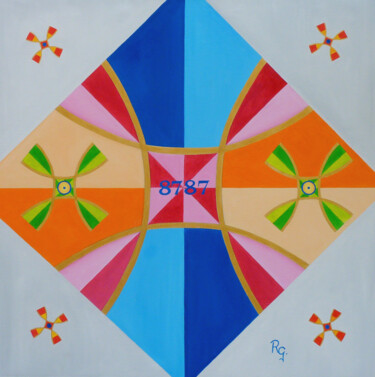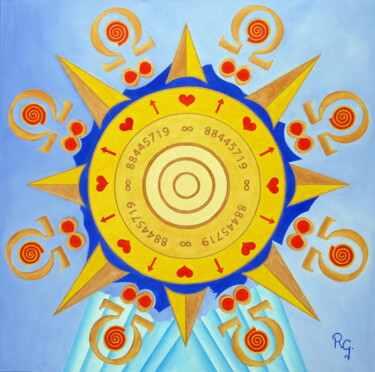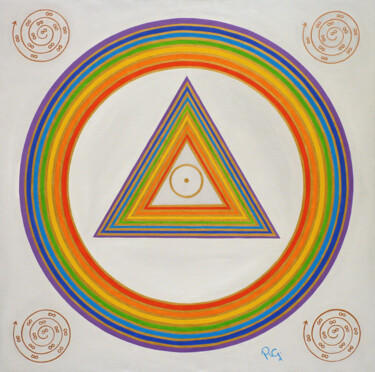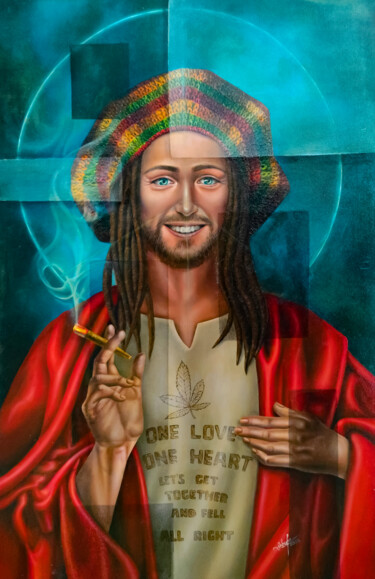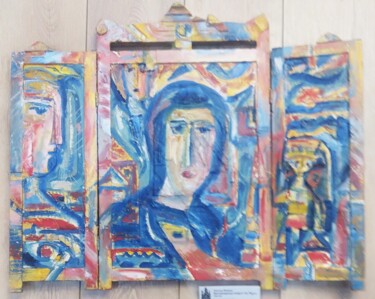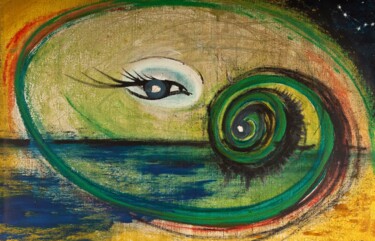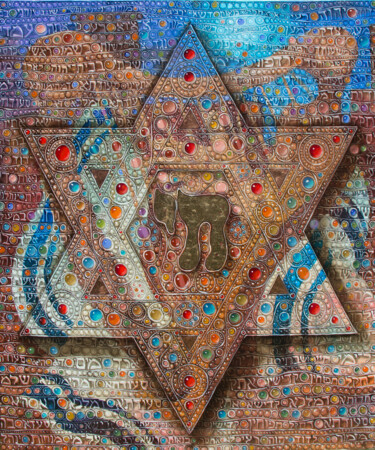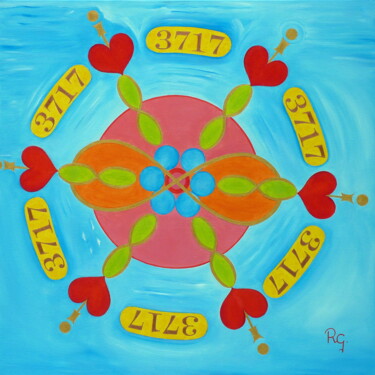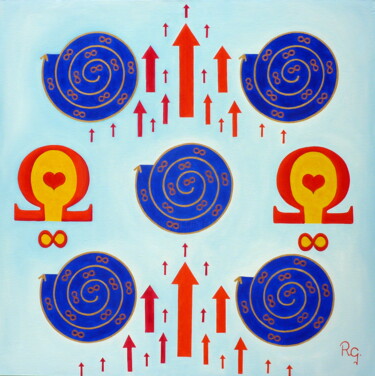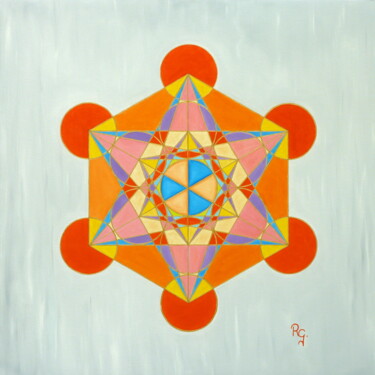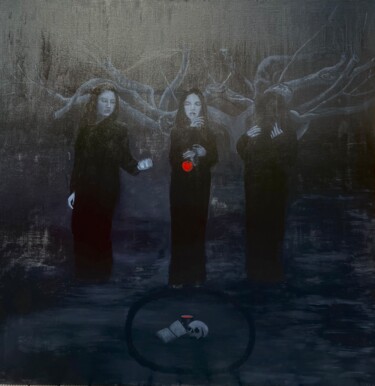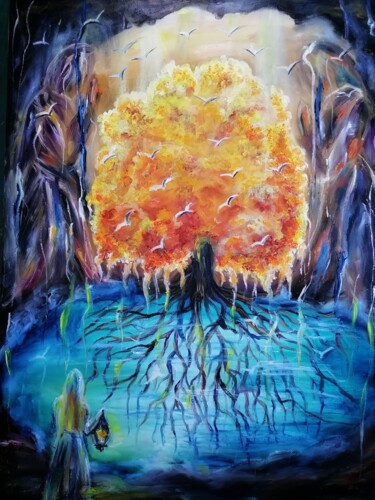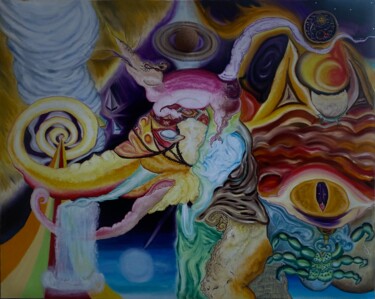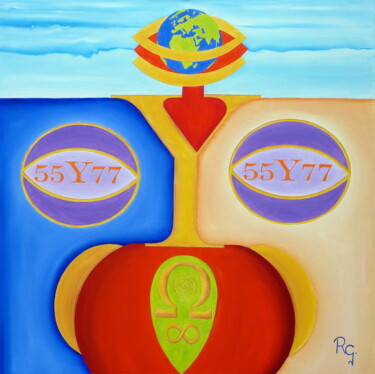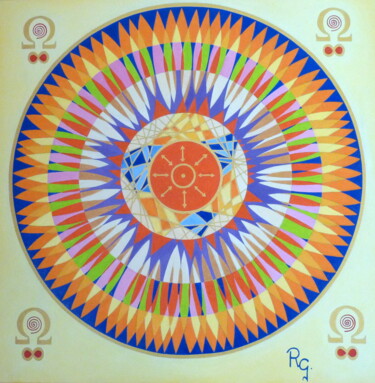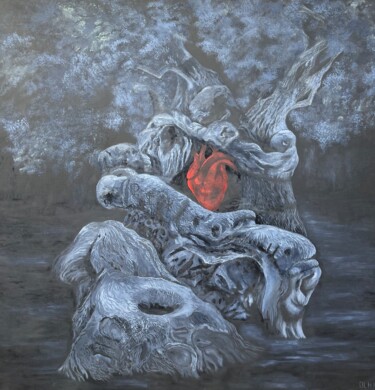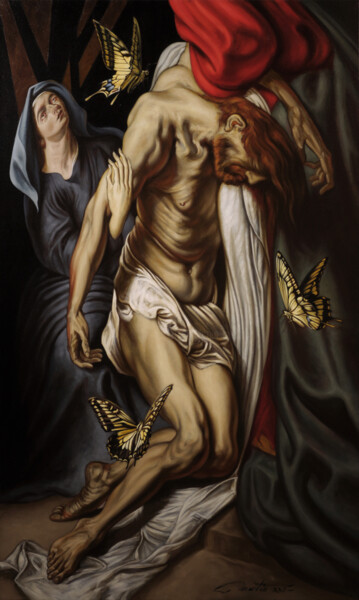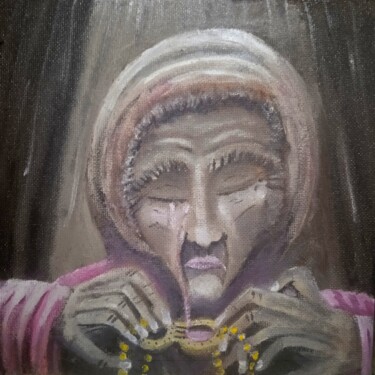84 Pinturas originais à venda:
Qual é a origem da técnica Óleo
Pintura composta por pigmentos unidos com óleo de linhaça ou cravos. A técnica tradicional consiste em sobrepor camadas de tinta cada vez mais rica em óleo para uma aderência forte e duradoura. A tinta a óleo usa uma substância cujo aglutinante consiste em um óleo secante que envolve as partículas de pigmento. Esta técnica pictórica atravessou os tempos graças às suas qualidades plásticas. No final da Idade Média, substituiu a técnica da têmpera, então seu uso se generalizou graças aos primitivos flamengos, em particular Jan Van Eyck, que o utilizou extensivamente. Geralmente consiste em pigmentos coloridos e um aglutinante que pode ser óleo de linhaça, óleo de cravo ou mesmo óleo de noz. Muitos artistas experimentaram esta técnica rainha da pintura a óleo, em particular pintores barrocos como Pierre Paul Rubens, ou mesmo românticos como Eugène Delacroix ou Théodore Géricault.
Compra de obras de arte sobre o tema " Espiritualidade "
Em todos os momentos, a espiritualidade foi um elemento consubstancial para os homens que buscaram um sentido para suas vidas. Uma busca pelo sagrado que não escapou aos artistas de cada época, que sempre buscaram representar em suas obras essa necessidade de crença. Seja na forma de diferentes religiões monoteístas (Cristianismo, Judaísmo, Islamismo), as diferentes religiões politeístas do mundo, crenças pagãs, superstições, lendas antigas ou mitologias fundadoras ... A espiritualidade deixou uma marca muito importante no mundo. Obras como "A Criação de Adão" de Michelangelo ou "A Última Ceia" de Leonardo da Vinci estão entre as obras mais significativas da história da Arte. A arte espiritual é uma forma de expressão artística que mistura tempo, religião e misticismo no processo de realização de uma obra. Isso pode ser manifestado independentemente da crença ou fundamento teológico. Artistas que aderem a este modo de expressão podem florescer em diferentes assuntos relacionados ao divino: reencarnação, meditação, contemplação, esoterismo, despertar, iluminação, devoção, sabedoria, busca psíquica, mediunidade ... O espiritualismo na pintura inspirou fortemente artistas famosos como como Piet Mondrian, Vassily Kandinsky, Georgiana Houghton ou Kasimir Malevich.
Você está procurando por Pinturas originais à venda ?
Explore todos os estilos e todas as técnicas de pintura: pinturas contemporâneas, arte de rua, arte abstrata, arte figurativa, paisagens, retratos, naturezas mortas, nus, aquarela, pintura a óleo, pintura acrílica ... Artmajeur é para todos as sensibilidades artísticas e celebra a beleza ao seu lado por 20 anos com mais de 2 milhões de obras de arte contemporânea para descobrir ... ou adquirir! A referência mundial em pinturas contemporâneas. Descubra obras de artistas contemporâneos de todo o mundo para decorar seu interior com classe! Amante da arte simples ou colecionador confirmado? Encontre a tela ou pintura favorita que realmente realce sua decoração. Artmajeur oferece obras originais, edições limitadas e impressões de arte dos melhores artistas contemporâneos do mundo. Na Artmajeur, as pinturas são selecionadas por entusiastas e especialistas do mercado de arte. Selecionamos para você as obras originais de pintores da moda, premiados e reconhecidos, bem como novos valores em ascensão no campo da arte contemporânea para orientá-lo e ajudá-lo em seu processo de compra de pinturas online.
Como comprar uma pintura a óleo online?
Imagine o dia em que você realmente pensa em comprar uma pintura a óleo online. Você encontra uma imagem que agrada a sua visão e orçamento, é fácil navegar por uma galeria de arte online porque eles pensam em tudo.
Comprar arte é moleza! Artmajeur implantou seu próprio sistema (o que as pessoas podem chamar de "motor do Google") para que os clientes economizem tempo pesquisando grandes peças sem ter que visitar galerias eles próprios.
Mas ainda existem outras opções que você pode ter além de comprar uma pintura a óleo online . Você também pode explorar estilos de acrílico e aquarela.
Você pode comprar pinturas a óleo online com apenas alguns cliques. Não só isso, mas você verá milhares de imagens nas galerias de arte. O site permite que você escolha entre nossa grande oferta de pinturas de milhares de artistas, estilos e tamanhos, sem ter que sair de casa! Encomendar um trabalho original é tão fácil quanto selecionar a peça perfeita para você ou outra pessoa. Basta adicionar uma obra de arte ao seu carrinho e você poderá ver se está disponível antes de clicar em "comprar" para que não haja surpresas na finalização da compra. Você precisa ler a política de remessa da empresa e as avaliações das pessoas no Google. Basta navegar na web em seu tempo livre por alguns dias antes de tomar uma decisão.
Mas se você realmente deseja comprar pinturas a óleo online, ajudaria se você pudesse encontrar um site que dê dicas sobre como comprar essas obras de arte. A maioria dos sites fornece conselhos sobre como escolher qual pintura comprar e também uma breve explicação.
Se você é um colecionador e amante da arte, encomendar uma pintura sobre tela também é uma ótima ideia de presente para seus entes queridos em ocasiões especiais como aniversário, casamento, Natal ...
Você também pode comprar pinturas a óleo online que podem ser fixas ou podem ser pinturas a óleo que você pode montar em suas paredes grandes. Você pode comprar telas com ou sem moldura, comprar uma obra de arte original ou uma impressão de arte de edição limitada. Além disso, você pode filtrar sua pesquisa por cor, tamanho, assunto ...
Ao comprar uma pintura a óleo online, você descobrirá que há muitas opções. Você pode comprar um retrato simples ou uma peça abstrata. Você pode comprar paisagens ou retratos. As opções são infinitas. No geral, comprar uma pintura online é realmente uma experiência genuína .
Imagine a expressão no rosto do seu ente querido quando desembrulhar uma bela pintura a óleo e perceber que foi comprada online. Isso é o que você pode oferecer a eles com nosso site de fácil navegação, Artmajeur.com, onde temos milhares de opções disponíveis para atender a cada orçamento, gosto ou ocasião. Explore nosso site agora e encontre aquela obra de arte perfeita hoje com o melhor preço!
Se você está procurando uma pintura de arte moderna para decorar sua casa ou escritório, oferecemos uma grande variedade de pinturas a óleo de artistas de todo o mundo. Nossa seleção inclui peças abstratas com cores vivas e retratos realistas que se encaixam em qualquer estilo. Também temos grandes telas disponíveis, para que você possa criar um espaço único feito de arte na parede. Navegue em nosso site hoje para encontrar obras de arte únicas que tornarão suas paredes excepcionais!
Discover contemporary artworks on Artmajeur
Contemporary art is a vibrant constellation of artistic expressions. This creative universe encompasses a wide array of mediums, from paintings, sculpture, and photography to drawing, printmaking, textile art, and digital art, each medium a star shining with its own distinct radiance. Artists use diverse supports and materials to bring their visions to life, such as canvas, wood, metal, and even innovative digital canvases for the creation of virtual masterpieces.
A contemporary painting, for instance, may weave its story through the masterful strokes of acrylic or oil, while a contemporary sculpture might sing its song in the language of stone, bronze, or found objects. The photographic arts capture and manipulate light to produce striking images, while printmaking employs techniques like lithography and screen-printing to produce multiples of a single, impactful image. Textile art plays with fabrics and fibers, whereas digital art pushes the boundaries of creation with innovative technology.
The allure of contemporary art lies in its boundary-pushing nature, its relentless quest for experimentation and its constant reflection of the evolving human experience. This boundless creativity, coupled with its strong social and personal commentary, makes every piece of contemporary art a unique emblem of its time, a mirror held up to the realities and dreams of our complex world. It whispers to us, moves us, provokes thought, and kindles a deep emotional response, stirring the soul of anyone willing to listen. It is, indeed, the language of emotions and ideas, spoken in the dialect of our era.

©2010 Valerij Gren Ko
Origins and history of contemporary art
The story of contemporary art unfolds in the mid-20th century, marked by seismic shifts in artistic expression. Post-World War II, around the 1950s and 1960s, artists began experimenting beyond traditional confines, challenging the norms of what art could be. This revolutionary epoch birthed myriad new movements and artistic forms such as abstract expressionism, pop art, and minimalism. Paintings, once confined by realism, embraced abstraction, as artists used color and form to express emotions and ideas. Notable periods like the advent of pop art in the late 1950s and early 1960s saw artworks mimicking popular culture and mass media, reflecting society’s shifting focus.
The sculptural arts, too, witnessed a metamorphosis. Sculptors started to experiment with new materials and forms, often creating artworks that interacted with the viewer and the surrounding space, fostering a sense of engagement. Drawing, a timeless practice, also evolved, with artists incorporating innovative techniques and concepts to redefine its role in contemporary art.
Photography, a relatively new medium, emerged as a powerful tool in the contemporary art landscape. Born in the 19th century, it truly came into its own in the latter half of the 20th century, blurring the lines between fine art and documentation. Printmaking, a practice dating back to ancient times, saw renewed interest and experimentation with techniques like lithography, etching, and screen printing gaining prominence.
The realm of textile art expanded dramatically, as artists began to appreciate the versatility and tactile quality of fabric and fibers. Artists began using textiles to challenge the boundaries between fine art, craft, and design.
The dawn of digital technology in the late 20th century heralded a new age for contemporary art. Digital art emerged as artists started leveraging new technologies to create immersive, interactive experiences, often blurring the line between the virtual and the physical world.
Through these transformative periods, the essence of contemporary art has remained the same: a dynamic, evolving reflection of the times we live in, continually pushing boundaries and embracing the new, always questioning, always exploring.

©2021 Isabel Mahe
Evolutions of theses contemporary works in the art market
As we navigate through the 21st century, the dynamic landscape of contemporary art continues to evolve and expand, reflecting our ever-changing world. Contemporary paintings, once primarily confined to two-dimensional canvases, now embrace a multitude of forms and techniques, ranging from mixed media installations to digital creations, each piece a rich a weaving of thoughts, emotions, and narratives. Sculpture, too, has ventured far beyond traditional stone and bronze, with artists incorporating light, sound, and even motion, embodying the ephemerality and flux of the modern world.
Photography, in the hands of contemporary artists, has expanded its horizons, seamlessly blending with digital technology to create breathtaking imagery that challenges our perception of reality. Drawing, as well, has transcended the borders of paper, incorporating multimedia elements and exploratory techniques to redefine its role in the artistic discourse. Printmaking continues to flourish, with contemporary artists using traditional methods in innovative ways to deliver potent social and personal commentaries.
Textile art, once considered a craft, now holds a prominent place in the contemporary art world, with artists using it to explore issues of identity, tradition, and cultural heritage. Meanwhile, digital art, the newest member of the contemporary art family, has revolutionized the way we create and interact with art, presenting immersive experiences that blur the boundary between the virtual and the physical.
These diverse forms of contemporary art hold significant value in the current art market, not only due to their aesthetic appeal but also their ability to encapsulate and communicate complex ideas and emotions. Collectors, curators, and art lovers worldwide seek these works, drawn to their inherent dynamism, their innovative use of materials, and their eloquent expressions of our shared human experience. As a testimonial to our times, these contemporary artworks encapsulate the pulse of our society and the resonance of individual voices, forever etching our collective narrative into the annals of art history.
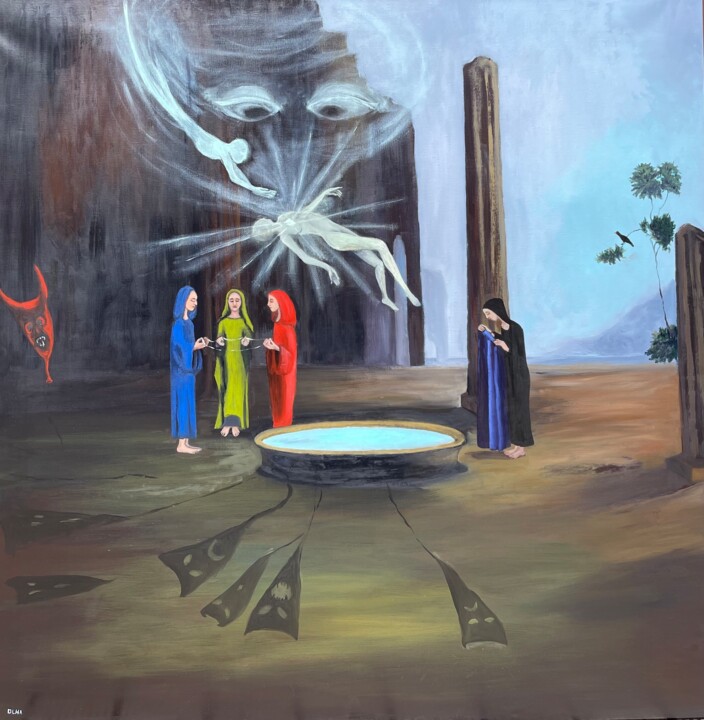
©2024 Olha Chumak
Famous Contemporary Artists
As we delve into the vibrant realm of contemporary art, we encounter an array of artists who shape this dynamic field. Each a master in their medium - painting, sculpture, photography, drawing, printmaking, textile, or digital art - they push artistic boundaries, reflecting our era and challenging perceptions. Let’s explore these remarkable contributors and their groundbreaking works.
1. Gerhard Richter - Known for his multi-faceted approach to painting, Richter challenges the boundaries of the medium, masterfully oscillating between abstract and photorealistic styles. His works, whether featuring squeegee-pulled pigments or blurred photographic images, engage in a fascinating dialogue with perception.
2. Jeff Koons - A significant figure in contemporary sculpture, Koons crafts monumental pieces that explore themes of consumerism, taste, and popular culture. His iconic balloon animals, constructed in mirror-polished stainless steel, captivate with their playful yet profound commentary.
3. Cindy Sherman - An acclaimed photographer, Sherman uses her lens to explore identity and societal roles, particularly of women. Renowned for her conceptual self-portraits, she assumes myriad characters, pushing the boundaries of photography as a medium of artistic expression.
4. David Hockney - Hockney, with his prolific output spanning six decades, is a pivotal figure in contemporary drawing. His bold use of color and playful exploration of perspective convey an intoxicating sense of joy and an unabashed celebration of life.
5. Kiki Smith - An innovative printmaker, Smith’s work explores the human condition, particularly the female body and its social and cultural connotations. Her etchings and lithographs speak to universal experiences of life, death, and transformation.
6. El Anatsui - A master of textile art, Anatsui creates stunning tapestry-like installations from discarded bottle caps and aluminum scraps. These shimmering, flexible sculptures blend traditional African aesthetic with contemporary art sensibilities, speaking to themes of consumption, waste, and the interconnectedness of our world.
7. Rafael Lozano-Hemmer - A leading figure in digital art, Lozano-Hemmer utilizes technology to create interactive installations that blend architecture and performance art. His work, often participatory in nature, explores themes of surveillance, privacy, and the relationship between people and their environments.

©2024 Olha Chumak
Notable contemporary artworks
The contemporary art landscape is a dynamic patchwork of diverse expressions and groundbreaking ideas, each artwork a unique dialog with its audience. Here are a selection of some renowned contemporary artworks, spanning various media such as painting, sculpture, photography, drawing, printmaking, textile art, and digital art, that have profoundly influenced this vibrant movement.
"Cloud Gate" by Anish Kapoor, 2006 - This monumental stainless steel sculpture, also known as "The Bean," mirrors and distorts the Chicago skyline and onlookers in its seamless, liquid-like surface, creating an interactive experience that blurs the line between the artwork and the viewer.
"Marilyn Diptych" by Andy Warhol, 1962 - An iconic piece of pop art, this silkscreen painting features fifty images of Marilyn Monroe. Half brightly colored, half in black and white, it reflects the dichotomy of celebrity life and its influence on popular culture.
"Rhein II" by Andreas Gursky, 1999 - This photographic artwork, a digitally-altered image of the Rhine River, is celebrated for its minimalist aesthetic. It strips the landscape to its bare essentials, invoking a sense of tranquility and vastness.
"Black Square" by Kazimir Malevich, 1915 - A revolutionary painting in the realm of abstract art, this piece, featuring nothing more than a black square on a white field, challenges traditional notions of representation, symbolizing a new era in artistic expression.
"Puppy" by Jeff Koons, 1992 - This giant sculpture, a West Highland Terrier blanketed in flowering plants, explores themes of innocence, consumer culture, and the interplay between high art and kitsch. It’s a delightful blend of traditional sculpture and garden craft.
"Re-projection: Hoerengracht" by Ed and Nancy Kienholz, 1983-1988 - A room-sized tableau representing Amsterdam’s red-light district, this work combines elements of sculpture, painting, lighting, and found objects. It engages viewers in a stark commentary on commodification and objectification.
"Untitled" (Your body is a battleground) by Barbara Kruger, 1989 - This photomontage, combining black-and-white photography with impactful text, explores issues of feminism, identity, and power. Its potent, confrontational message is a prime example of the power of text in contemporary visual art.
"For the Love of God" by Damien Hirst, 2007 - This sculpture, a platinum cast of a human skull encrusted with 8,601 diamonds, probes themes of mortality, value, and the human fascination with luxury and decadence. It’s a compelling blend of macabre and magnificence.
"Physical impossibility of Death in the Mind of Someone Living" by Damien Hirst, 1991 - This artwork, featuring a tiger shark preserved in formaldehyde, blurs the line between traditional sculpture and biological specimen. It prompts viewers to contemplate mortality and nature’s ferocity.
"One and Three Chairs" by Joseph Kosuth, 1965 - A piece of conceptual art, it presents a physical chair, a photograph of a chair, and a dictionary definition of a chair, thus exploring the relationship between language, picture, and referent in art.
These pieces, in their diversity, exemplify the rich tapestry of contemporary art, each piece a unique commentary on our world and a testament to the limitless potential of creative expression.
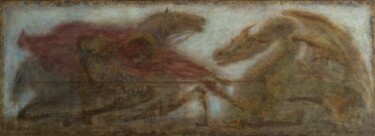
Konstantinos Efimidis
Óleo em Tela de linho | 21,7x59,1 in
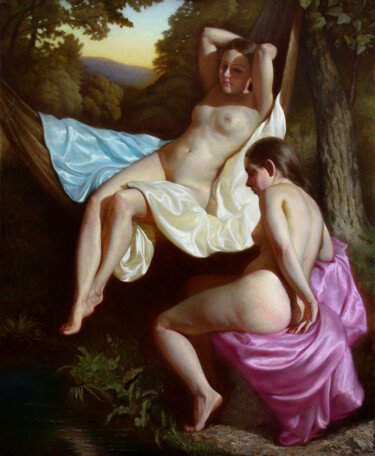
Nicolas Szuhodovszky
Óleo em Tela | 59,1x48,4 in

Isabel Mahe
Óleo em Madeira | 13x52,4 in
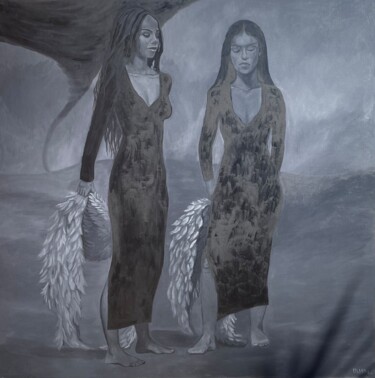
Olha Chumak
Óleo em Tela de linho | 59,1x59,1 in
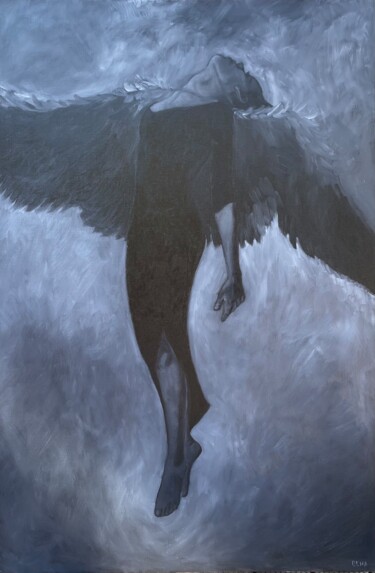
Olha Chumak
Óleo em Tela de linho | 59,1x39,4 in
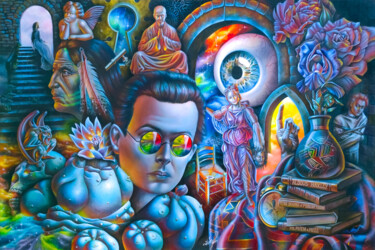
Eve Art
Óleo em Tela | 31,5x47,2 in
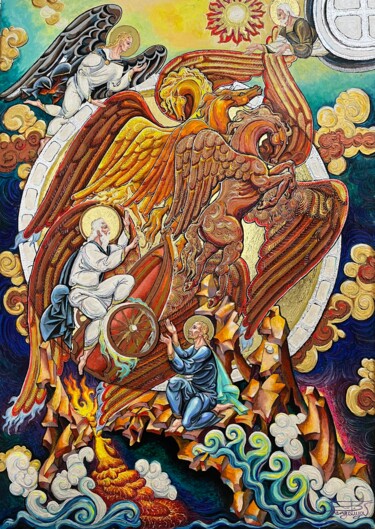
Alexandr Shengeliya
Óleo em Tela de linho | 66,1x48 in

Olha Chumak
Óleo em Tela de linho | 59,1x39,4 in




